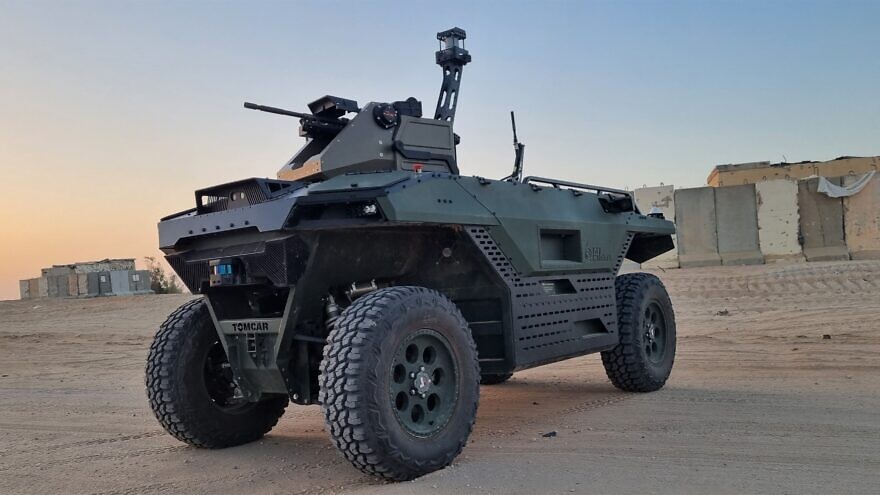The Rex MK II can move autonomously on rough terrain, fire on targets, transfer logistics and gather intelligence; it can also carry water, food and ammunition through enemy territory.
In the coming days, Israel Aerospace Industries (IAI) will display a new autonomous combat vehicle at a landmark American defense exhibition.
The Rex MK II, IAI’s latest unmanned land platform, is designed to keep troops out of harm’s ways in challenging combat conditions.
Already sold to customers around the world, the platform can carry 1.3 tons and serve forces by gathering intelligence, carrying heavy logistical loads and conducting remote gun attacks on enemy targets.
The REX MK II is armed with remotely controlled weapons systems, including a 7.62-mm machine gun and a caliber 0.50 heavy machine gun.
It will be on display at the annual Association of the United States Army (AUSA) exhibition and conference from Oct. 11 to Oct. 13 in Washington, D.C., after being unveiled on Sept. 13 at London’s DSEI defense exhibition.
Rani Avni, deputy general manager of IAI’s Land Systems Division and the head of the Robotics and Autonomous Systems Directorate, told JNS that the Rex is designed to help ground forces that are maneuvering during combat.
“It has a big underbelly, and it can travel in difficult terrain, maneuvering together with infantry forces,” he said. “We built it with a hybrid electrical engine for quiet maneuvering.”
IAI has spent the past 15 years developing, building and improving autonomous systems, according to Avni. Artificial intelligence enables such systems, including the Rex, to enhance their capabilities by utilizing its onboard sensors for situational awareness.
“This allows autonomous maneuvering. Simply press a button, and it moves from one location to another,” said Avni.
The system’s awareness of its surroundings, and its ability to use sensors like radar and cameras, means the Rex can go on a range of missions—from collecting information on enemies to directing firepower from its weapons stations after being approved by a human operator.
If soldiers need a robot to carry quantities of water, food and ammunition for them through enemy terrain, the Rex can do that, too.
It can also theoretically conduct border patrols, though such missions are more reserved for the IAI-made Jaguar semi-autonomous robotic system, which the IDF has been deploying on the Gazan border.
‘Robotic tools alongside human personnel’
In late August, the United Kingdom Ministry of Defense awarded IAI and British company Marlborough Communications Limited a contract for four unmanned ground vehicles as part of an experimentation program. The vehicles will be based on the Rex model, with onboard sensors.
IAI has not discussed the identity of other clients.
“Many are interested, including the most advanced militaries, which are in contact with us,” he said.
Asked how he envisioned the area of unmanned ground vehicles in the near and mid-term future, Avni replied: “This will be decided by the user. The level of autonomy could grow in line with the level of the user’s readiness. We will see robotic tools alongside human personnel. There will be man-machine cooperation.”
Further down the line, he said, full autonomy when it comes to ground platforms remains a possibility. A person would remain in the loop, approving missions such as firepower engagement.
Ultimately, he affirmed, the technology is moving quickly, and it is the readiness of military operators to shift to autonomous systems that will decide the pace of change.
(JNS).
